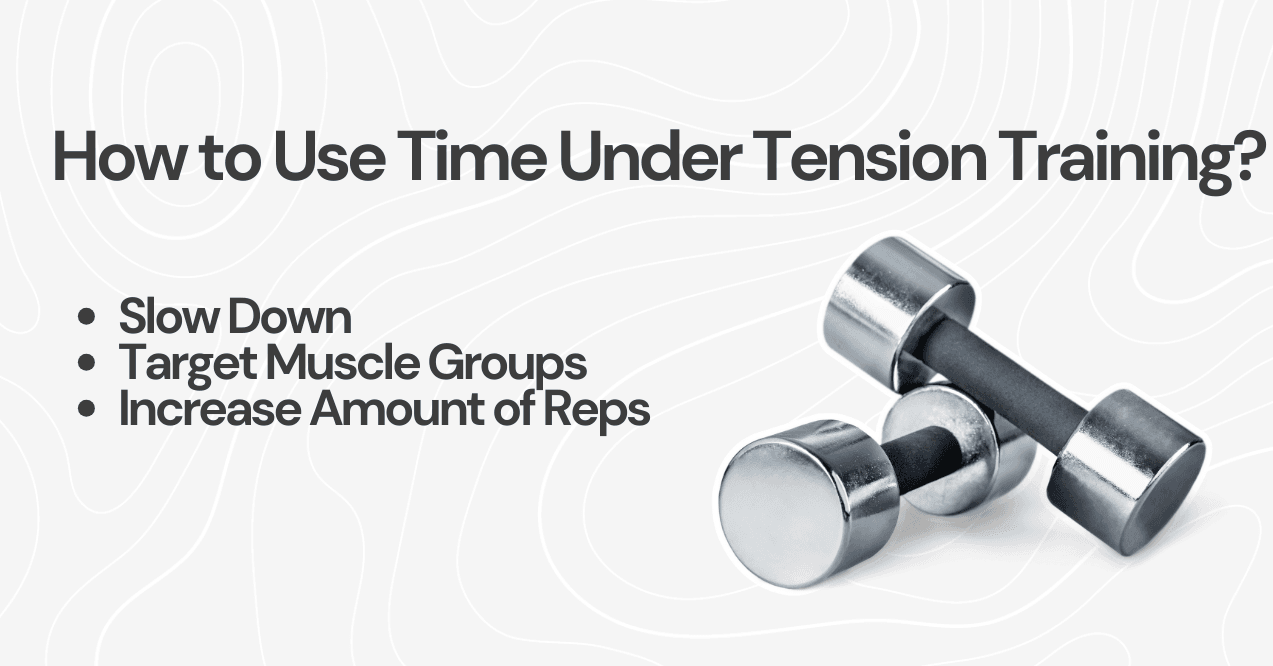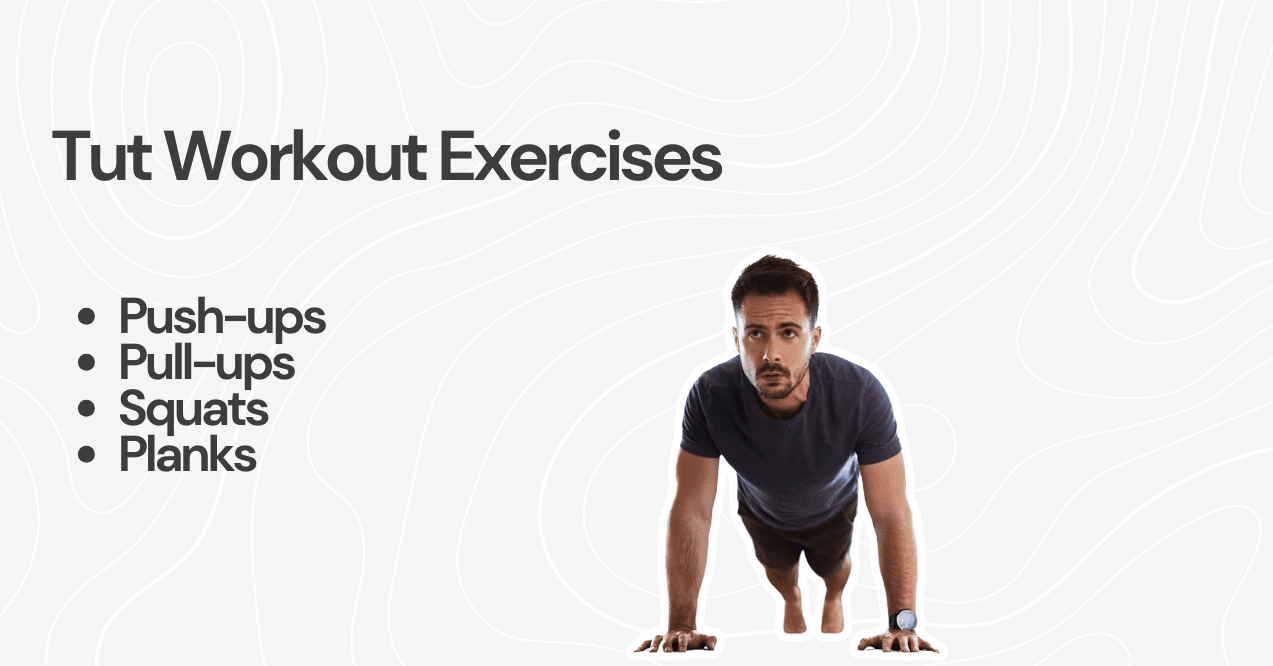What Is a Time Under Tension Workout? A Complete Guide
A time under tension workout has grown into one of the most talked-about training methods among fitness enthusiasts. This technique focuses on the duration your muscles spend working during each exercise, rather than just counting reps. Incorporating a cutting workout plan alongside time under tension training can help maximize muscle definition while maintaining strength.
Key takeaways:

What Is Time Under Tension (Tut) Workout?
To define TUT in simple terms: it’s a training approach that focuses on how long your muscles are actively working during each exercise rep. Rather than rushing through movements, this method emphasizes controlled, deliberate actions.
This approach raises an important question – do resistance bands build muscle as effectively as weights? The key lies in sustained tension, which resistance bands naturally provide, making them a valuable tool for muscle development. For effective back training, lat workout with dumbbells is another great way to ensure controlled muscle engagement during exercises.
A typical TUT workout involves carefully timing each phase of an exercise. For instance, taking 4 seconds to lower a weight and 2 seconds to lift it creates 6 seconds of tension per rep. This controlled pace keeps your muscles engaged longer than traditional quick-paced repetitions.
Does Time Under Tension Work?
The effectiveness of TUT workouts lies in how your muscles respond to extended periods of work. Think of your typical bicep curl – when you slow it down to a 4-second count while lowering the weight, your muscles work significantly harder than with quick movements.
This principle applies to all resistance exercises from squats and rows to a chest and tricep workout like bench presses, dips, and push-ups. Let’s take push-ups as an example: a standard push-up might take 2 seconds total, but a TUT push-up lasting 8-10 seconds creates more work for your chest, shoulders, back and triceps. The longer your muscles stay engaged, the more they adapt to handle the sustained effort.
Many advanced athletes incorporate TUT into their routines, particularly during plateau phases. For instance, a standard bench press becomes more challenging when using a 3-second descent and 2-second press – even with lighter weights. This adjustment often helps break through training plateaus while maintaining proper form.
Three Potential Benefits of Tut Workout

Let’s explore the main potential advantages this training style offers for your fitness journey.
1. Muscle Growth (Hypertrophy)
When you perform a tut chest workout or any other TUT-focused exercise, your muscles experience extended periods of tension. This prolonged engagement with slower tempo signals your body to adapt by building stronger, more resilient muscle fibers.
The continuous tension creates an optimal environment for muscular development. Your muscles work harder throughout the entire range of motion, leading to more thorough muscle fiber activation.
2. Improved Muscular Endurance
By maintaining tension throughout each exercise, your muscles learn to sustain effort for longer periods. This adaptation builds exceptional stamina and staying power.
The sustained work helps develop slow-twitch muscle fibers, which are essential for endurance activities. Your muscles become more efficient at managing extended periods of exertion.
3. Better Form and Technique
Slower movements naturally encourage more mindful exercise execution. This deliberate pace helps you spot and correct form issues that might go unnoticed during faster-paced workouts.
The controlled tempo allows you to focus on proper alignment and muscle engagement throughout each movement. This attention to detail can lead to more effective workouts and reduced risk of poor form-related issues.
For optimal results, many athletes combine TUT training with quality nutrition protein supplements like Bone Broth Protein.

Bone Broth Protein stands out as a natural option for physically active individuals. This concentrated protein source contains collagen and minerals that support your fitness goals. Athletes often include it in their nutrition plan to complement their training routines.
What makes Bone Broth Protein unique:
- Natural protein source
- Rich in collagen compounds
- Fits various nutrition plans
- Suitable for different activity levels
How to Use Time Under Tension Training?

Incorporating TUT exercises into your routine requires attention to detail and proper planning. A somatic workout plan can complement this approach by improving movement efficiency, flexibility, and muscle activation, helping you maintain better control during each rep. While many ask Can You Drink Protein Shakes Without Working Out? The real focus should be on combining proper nutrition with effective training techniques like TUT for optimal results. Selecting the right supplements, such as pre-workouts, can further enhance your performance. Knowing what to look in pre-workout – like caffeine for energy, beta-alanine for endurance, and electrolytes for hydration—can help you power through the slower, controlled movements of TUT training and maximize the benefits. Here’s how to make the most of this training style.
Slow Down
Focus on creating a steady, controlled tempo for each exercise. A common approach involves:
- 3-4 seconds for the lowering phase
- 1-2 seconds pause at the bottom
- 2-3 seconds for the lifting phase
- Brief pause at the top
Target Muscle Groups
Select exercises that allow for optimal muscle engagement:
- Choose compound movements for larger muscle groups
- Include isolation exercises for specific targeting
- Rotate between different muscle groups across workout days
Increase Amount of Reps
When using the TUT technique, adjust your usual rep scheme:
- Start with lighter weights than normal
- Aim for 8-12 reps per set
- Complete 3-4 sets per exercise
- Rest 60-90 seconds between sets
Tut Workout Exercises

These exercises work particularly well with the time under tension method:
Push-ups:
- Standard push-ups with 4-second lowering phase
- 2-second hold at the bottom
- 2-second push back up
Pull-ups:
- 4-second negative phase
- Brief pause at full hang
- 2-3 second pull-up phase
Squats:
- 4-second descent
- 2-second hold at parallel
- 2-second rise
Planks:
- 30-60 second holds
- Focus on maintaining perfect form
- Add small movements for increased challenge
Conclusion
Time under tension training offers a fresh approach to your workout routine. By focusing on controlled movement and extended muscle engagement, you can create more effective training sessions.
This method provides a structured way to advance your fitness goals through careful attention to exercise execution. While it requires patience and practice, the potential benefits make it worth considering as part of your training arsenal.
Yes, you can mix TUT with traditional training styles. Try applying it to 1-2 exercises per workout or dedicate specific training days to TUT workouts while keeping other sessions at regular tempo.
Start with bodyweight exercises to master the TUT technique. Focus on basic movements like push-ups or squats using a 2-second up, 4-second down tempo. This builds proper form and muscle control.
Aim for 3-4 sets of 8-12 reps per exercise. Each rep should last 6-8 seconds total. Adjust the weight so you can maintain proper form throughout the set while feeling challenged.
Advertisement. This site offers health, wellness, fitness and nutritional information and is designed for educational purposes only. You should not rely on this information as a substitute for, nor does it replace, professional medical advice, diagnosis, or treatment. If you have any concerns or questions about your health, you should always consult with a physician or other health-care professional. Do not disregard, avoid or delay obtaining medical or health related advice from your health-care professional because of something you may have read on this site. The use of any information provided on this site is solely at your own risk.







